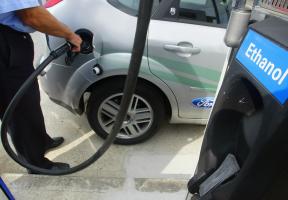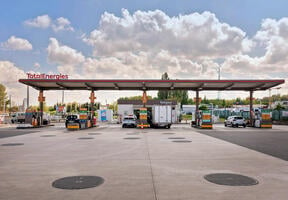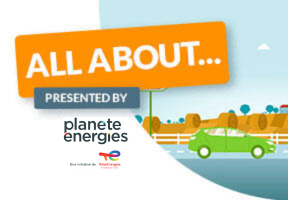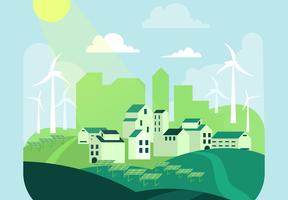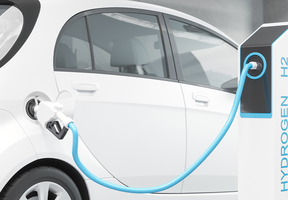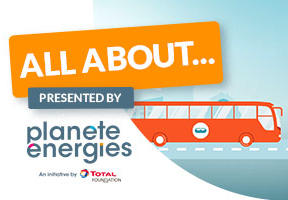More Environmentally Friendly Transportation
5 min read
In France, road transportation accounts for 34% of total CO2 emissions, with passenger cars responsible for more than half. From tax incentives to ecodriving, a wide range of measures are available to optimize consumption and thereby reduce greenhouse gas emissions.
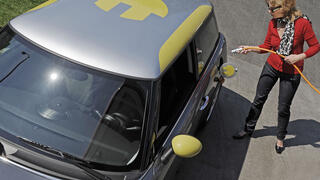
© TotalEnergies / M. LAUTENSCHLAEGER - The electric car is one of a range of solutions for more sustainable transportation.
In addition to its already stringent standards on vehicle emissions that affect air quality, the European Union has begun to introduce new standards relating to emissions of carbon dioxide, which is not classified as an air pollutant. E.U. legislation currently limits average CO2 emissions to a maximum of 120 grams per kilometer. This figure will be cut to 95 grams in 2020,1 and a European Parliamentary committee has proposed further reducing it to between 68 grams and 78 grams by 2025. The limit applies to the average emissions from new cars. This means that carmakers can continue to offer models with large engines (a deal-breaker for Germany), but will have to offset the higher emissions by producing more smaller cars or vehicles with electric or hybrid engines.1
France’s Approach to Improving Vehicle Energy Efficiency
To encourage car buyers to opt for fuel-efficient vehicles, the French authorities have improved consumer information and introduced tax incentives.
The first measure taken to enhance driver awareness was the institution of an label for vehicles, indicating their fuel consumption and carbon dioxide emissions. Since 2006, every new car on the market in France must have an energy efficiency label. The label indicates how much fuel the vehicle consumes, in liters per 100 kilometers, and its carbon dioxide emissions, in grams per kilometer. Like the energy performance certificate for buildings, the label also includes a color-coded chart with bands ranging from A in green for the cleanest vehicles to G in red for the worst polluters.2
The other measure taken by the French government has been the introduction of “feebate” schemes, taxes and incentives to make purchasing low-emission vehicles more financially attractive. Since September 2017, new car buyers have been charged a tax on all vehicles that emit 121 grams or more of CO2 per kilometer, compared with 131 grams previously. A scrappage program has also been rolled out to encourage drivers to trade in their out-of-date cars. Lastly, the French Environment and Energy Management Agency (ADEME) has set up an online platform to provide detailed information on all vehicles3.
Ecodriving to Reduce Fuel Consumption
To reduce your car’s fuel consumption:
- Don’t overload the car.
- Drive smoothly and steadily and avoid sudden braking.
- Switch off the engine if you stop for longer than 20 seconds.
- Check your tire pressure regularly.
- Combine journeys and use the shortest routes.
Of course, the best way to reduce fuel consumption is to avoid using your car when you don’t really need to.
For short distances, it is much better to walk, ride a bike or take public transportation. This is because, when you start your car, you use a considerable amount of fuel to warm up the engine. As a result, your car consumes 45% more fuel in the first kilometer and 25% more fuel in the second kilometer, compared with the rest of your journey.
Today, there is a huge amount of information on how to save fuel when driving. French petroleum and renewable energies institute , for example, has launched a mobile ecodriving app for smartphones.
Bikes, Public Transportation and Car Sharing
Greenhouse gas emissions can also be reduced by using different transportation modes, particularly in urban areas, where public transportation offers a viable alternative.
Several European cities, primarily in Northern Europe, have developed an extensive network of bike lanes. In Stockholm, for example, despite the cold climate, 68% of commuters go to work on foot or by bike, 25% use public transportation and only 7% take their car.4
In urban areas, public transportation is more energy-efficient for longer journeys. For the same distance traveled, taking the subway uses ten times less energy than driving your own car. Bus networks are also a good alternative, as long as they use energy-efficient vehicles and attract a sufficient number of passengers.
Various other ideas have also been tested over the past few years. The Autolib' electric car sharing system introduced in Paris has now been adopted in several other cities. In the suburbs of Brussels, the VAP ride sharing network encourages drivers to offer their neighbors a lift. And several websites offering peer-to-peer rides haring or car sharing services, such as European leader BlaBlaCar, have met with great success.
Sources:
- See the European Commission’s Europa site
- See the ADEME feature report (in French only)
- See the ADEME platform (in French only)


